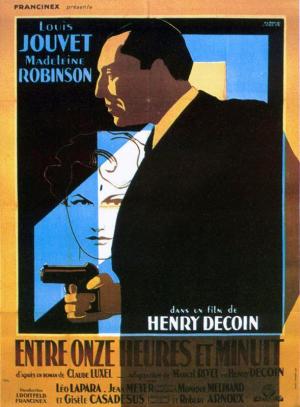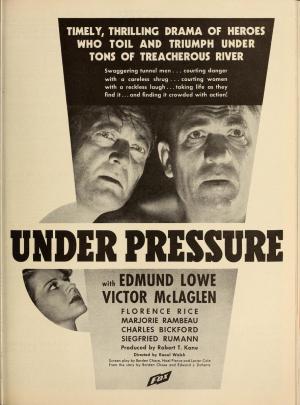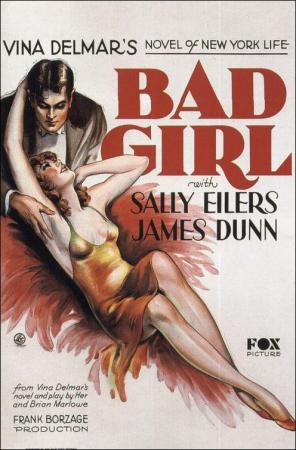rohmerin
Miembro habitual
Cine pre-code Hays
en la fantastica pagina dvdbeaver estan de construccion sobre un especial de esta especie de genero dentro de la historia del Hollywood clasico. Hay listado, links, fotos, etc.
Que ganas de ver las que no conozco.
www.dvdbeaver.com/pre-code.htm
he encontrado una web especializada en los hitos del sexo en el cine, con mencion especial a la maravillosa TROUBLE IN PARADISE de Lubitsch, que es la mas sofisticada pelicula pre-code.
son muchas paginas.
www.filmsite.org/sexinfilms1.html
decir, que despues de haber visto el pack de Mae West, poco he aprendido sobre los hombres que no supiera, ja, ja, pero me lo pase muy bien con 4 de las 5 peliculas (go west young man es espantosamente aburrida y mala a pesar de ser de hathaway, pero claro, no es pre code, es post code, aunque My little chinckendale, del 40 y con WC Fields es tan desvergonzada y libre como las pre)
Sexo, sexo y sexo. Cecil b De Mille. Su decepcionante vision de la moral en Los 10 mandamientos (la el 23) se compensa con el desenfreno amoral de la Roma-amoR pagana de El signo de la cruz. Violencia en el circo, mas proxima a Gladiator que a Quo vadis.
Four frightened people es una pelicula breve y floja con un desnudo velado de Claudette Colbert en una cascada paradisiaca. Ella, especializada en el soft historico: Cleopatra y la larga seduccion al peor Marco Antonio de la historia (su ingles de tendero de puesto de limonada por 1 centavo hace insoportable su pseudo interpretacion) o Popea, es aqui una virginal profesora que esconde su fuego sexual tras una miopia en la PEOR caraterizacion y con el mas TRAMPOSO giro de guion se convierte en lo que era: puro sexo.
link
www.dvdtimes.co.uk/conten...ntid=62504
Warner Home Video and Turner Classic Movies (TCM) partner to spotlight three rare ground-breaking films from Hollywoods Pre-Production Code era with the Region 1 DVD release of TCM Archives: Forbidden Hollywood Collection Volume 1 on 5th December 2006.. This first in a series of releases of provocative, shocking feature films from the Warner Bros. library is a restored and remastered Two-Disc Collection of three legendary and notorious films. The films -- which earned their place in history thanks to three daring young actresses who undertook these racy, and riveting roles -- pay tribute to an extraordinary time before the censors cut the party short.
Baby Face, starring Barbara Stanwyck, is the most famous title, required viewing for anyone interested in how far Hollywood would go before censorship kicked in. This collection boasts a rarely seen pre-release version, thought lost for 70 years and shot before censors eliminated several scenes. Recently discovered and restored by the Library of Congress, this authentic version of Baby Face has been digitally remastered, and is a revelation to legions of fans familiar with the previously seen theatrical release version. The New York Times Dave Kehr wrote [Baby Face] remains one of the most stunningly sordid films ever made, a standout even among the wave of risqu entertainments that filled American screens in the early years of the Depression. Even the cut version is a jaw-dropper; [now] with its five full minutes of sleaze restored, it [the original version] has to be seen to be not quite believed. This Collection will treat viewers to both versions, allowing them to compare how certain scenes were carefully pruned, heavily edited, or replaced entirely.
Also featured is Red Headed Woman, starring Jean Harlow in one of her best early films, written by the famed Anita Loos (Gentlemen Prefer Blondes), where Harlow shines and beguiles as an avaricious secretary out to climb the social ladder even if its on her back. Waterloo Bridge, the first adaptation of famed playwright Robert E. Sherwoods stirring play, starring Mae Clarke (Frankenstein, The Public Enemy) as a prostitute in World War I-torn London, and directed by the legendary James Whale (Show Boat [1936], Frankenstein), rounds out the Collection. This deluxe two-disc set is available at the collectible price of $49.92 SRP.
About the Production Code
It was not the roaring 20s, as is generally believed, but the four years between 1929 and 1934 that was the real era of wide-open sexuality in films. Before Hollywood began enforcing a self-imposed Production Code, many films allowed for extraordinary frankness, including nudity, adultery, premarital sex and prostitution.
Film industry censorship began in 1922, following a trio of scandals that rocked Hollywood: the Roscoe Fatty Arbuckle rape/murder trial, the never-solved murder of director William Desmond Taylor and the drug-related death of matinee idol Wallace Reid. In 1930, a new version of the Production Code was drafted to standardize the censorship requirements of various states, since the inception of talking films made it difficult to arbitrarily cut offending scenes.
However, the studios merely paid lip-service to the Code since they were more interested in finding ways to lure dwindling Depression era audiences into theatres.
The Pre-Code era officially kicked off with the 1929 release of The Divorcee, starring Norma Shearer, with a startling story of a woman who discovers her husband has had an affair and sets out to balance the account. The phenomenal critical and financial success of this picture led other studios to attempt to top it and soon almost every actress in Hollywood was required to sin and repent. The sensational series of films that emerged helped Hollywood survive its economic crisis and moviegoers enjoy the vicarious thrills the films provided.
The era came to an abrupt close beginning July 1,1934, when Catholic watchdog groups threatened boycotts of all films and the Church established the Legion of Decency to monitor movies. Studio heads bowed to the pressure and the era of censorship began, lasting until the establishment of the industrys rating system in 1968.
About the Movies
Baby Face (1933)
Baby Face was one of the first films to be pulled from theatres when the Production Codes restrictions finally went into full effect. The fast-paced, gritty story of a woman whose every move is coldly calculated to better her position through the liberal use of seduction still has the ability to shock. Now with the newly discovered, longer authentic print from the Library of Congress, todays audiences can experience the seamy portrayal that caused such a stir. The San Francisco Chronicles Mick LaSalle said: The differences between the original and the release versions of Baby Face are small; and yet combined, they spell the difference between a good three-star movie and a delightful four-star movie."
Added to the National Film Registry in 2005 and voted by Time Magazines top critics as one of the 100 Best All-time Films, the restored Baby Face stars Barbara Stanwyck (The Lady Eve, Stella Dallas) in a spectacular performance as Lily Powers, the beautiful daughter of a steel-town speakeasy owner, a sleazy man who expects her to serve sexual favors along with the beer. After he dies in a still explosion, she boards a train to New York in search of a better life. There she picks a high-rise office building and sleeps her way to the top, seducing anyone who can help her advance, from office boy to company president. When Lily finally discovers true love, it just may be too late for her to change her ways. This newly-discovered version made its premiere at the 2005 London Film Festival, and is now available to DVD audiences for the first time ever.
Red Headed Woman (1932)
Jean Harlow, the legendary Platinum Blonde sex symbol of the 30s, is transformed into a titan-tressed temptress for the shockingly funny Red Headed Woman. This 1932 release signaled a major career detour for Harlow, who up until then had played mostly sexually-voracious gangster molls (The Public Enemy) and vamps (Iron Man). The addition of comedy to her standard repertoire endeared her even more to audiences and led to a long string of box-office hits, including Red Dust, Bombshell, China Seas and Libeled Lady.
In Red Headed Woman, Lil Andrews (Harlow) is a girl from the wrong side of the tracks who's determined to get ahead socially, and sets her sights on her happily married boss Bill Legendre (Chester Morris), refusing to take no for an answer. The shameless home wrecker uses every trick in the book to land him. She finally does but still must gain acceptance in local society, so tries to conquer New York through an alliance with an older admirer while simultaneously conducting an affair with his chauffeur. In direct opposition to the Production Code, she ends up in Paris rich and unrepentant.
While Red Headed Woman wavers wildly between comedy and melodrama, Harlow displays an engaging comic flair in her delightful portrayal. The film is loaded with marital infidelity, lots of implicit sex, violence, sadism (when Bill finally slaps Lil out of frustration, she says, Hit me again! I like it!) and plenty of glimpses of Harlow barely clad. Even today, the film would be considered adult fare.
Waterloo Bridge (1931)
While the 1940 remake might be better known, this gritty 1931 original version of the acclaimed wartime romance stars Mae Clarke, who transcends the tawdry material with a luminous performance that should have assured her of a bigger career. Unfortunately, Waterloo Bridge remained out of the public eye for more than 50 years, leaving Clarke to be best remembered as the woman into whose face James Cagney smashes a grapefruit in The Public Enemy. The second film directed by James Whale (Show Boat [1936], Bride of Frankenstein), Waterloo Bridge was based on a play by Robert E. Sherwood.
Prostitution was a favorite topic of many pre-code films since the subject matter was titillating to audiences yet safely removed enough not to be threatening. In Waterloo Bridge, Mae Clarke is an American chorus girl who marries an officer in London during World War I. After he's reported missing his family cruelly rejects her and, desperate to survive, she drifts into prostitution.
Special Features:
Disc One includes the New to DVD features Waterloo Bridge and Red-Headed Woman with an Introduction by Robert Osborne.
Disc Two includes the New to DVD feature Baby Face in both its standard theatrical release and original, uncensored pre-release version. The theatrical trailer is also included.
no se pierdan VAMPIRESAS DE 1933, el mitico musical sobre la depresion y que ayudo a instaurar la censura por su celebre y osado numero musical de Busby Berkeley Petting in the park.
decepcionates Waterloo Bridge de Whale, y Red-haired woman de Conway.
en cambio, Baby face es una de las mayores sorpresas que he disfrutado en los ultimos tiempos.
Sherlock media editara en Espaa la pobre UNA HORA CONTIGO de Lubitsch.
link al pack WB con los tres filmes pre code
www.dvdbeaver.com/film2/D...ection.htm
hay un excelente DOCU de la TCM que se llama Mujeres peligrosas sobre el cine pre-code. Está disponible ya sabéis donde con subt en español.
 [/b]
[/b]
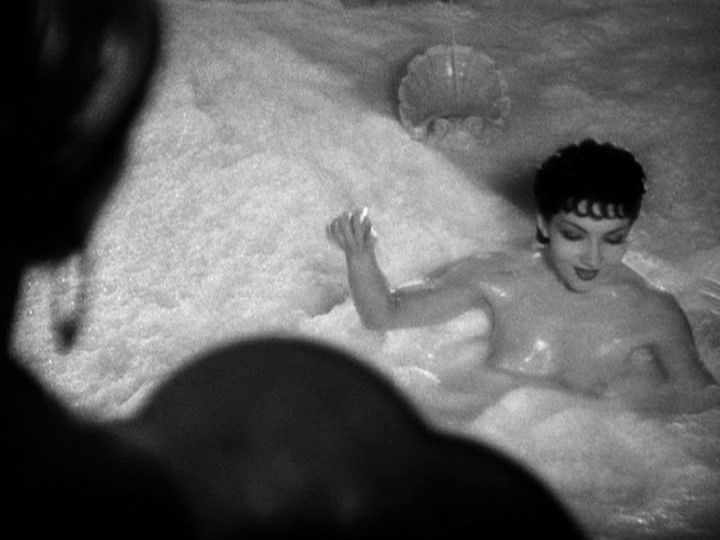
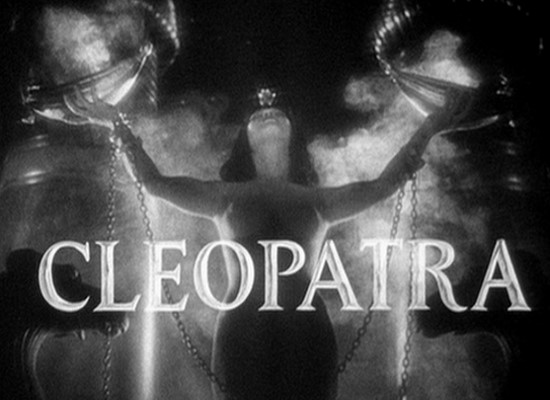
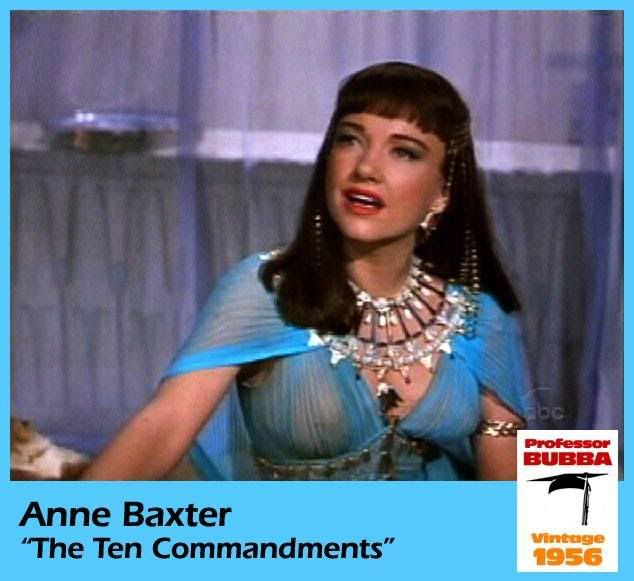

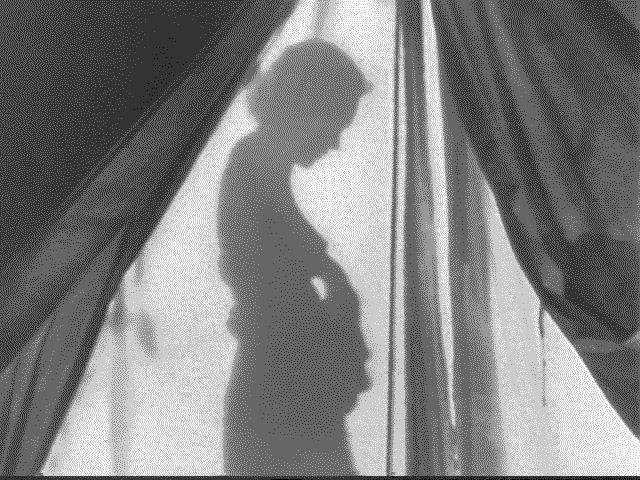
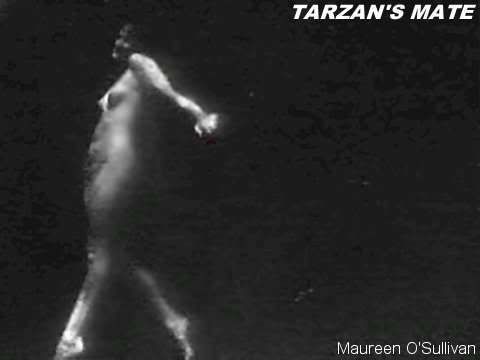
Hay aportaciones de BELA KARLOFF muy interesantes sobre la censura en Tarzán y King Kong. Copio su post:
Ahí cuento algo sobre las progresivas amputaciones que sufrió la peli. Y por cierto que a la edición española en dvd no le faltan "algunos" frames, sino bastantes...
Un caso mítico es el de la película "El tesoro de Tarzán". La empezó a dirigir un extraño individuo cuyo nombre no recuerdo ahora, y que no dirigió peli alguna más. Nosequé McNosecuántos... La leyenda dice que, terminada la película, se hizo el típico pase de prueba y los niños salieron corriendo horrorizados...
No es así. Parece que los productores no quedaron muy contentos con el montaje - no se llegó a hacer el pase de prueba - . Así pues, cortaron la peli, y contrataron diversos directores para dirigir alguna escena nueva, como por ejemplo William A. Wellman. Finalmente, quien se hizo cargo de todo fue Richard Thorpe, que fue quien quedó acreditado. No queda muy claro qué rodó cada uno, pero de lo que rodó el director original queda muy poco. Por ejemplo, algunas fotos de Tarzán luchando contra murciélagos gigantes, y que se perdió por ahí...
Si os fijáis en la peli, tal como queda ahora, hay un plano de la expedición internándose en los pantanos, y el siguiente es de ellos ya saliendo, y con todo el cuerpo manchado de barro...
Imagen de la escena censurada por los productores...
Y aquí, un link en inglés que cuenta el pormenor con cierto detalle: http://images.google.es/imgres?imgur...%3D1%26hl%3Des
en la fantastica pagina dvdbeaver estan de construccion sobre un especial de esta especie de genero dentro de la historia del Hollywood clasico. Hay listado, links, fotos, etc.
Que ganas de ver las que no conozco.
www.dvdbeaver.com/pre-code.htm
he encontrado una web especializada en los hitos del sexo en el cine, con mencion especial a la maravillosa TROUBLE IN PARADISE de Lubitsch, que es la mas sofisticada pelicula pre-code.
son muchas paginas.
www.filmsite.org/sexinfilms1.html
decir, que despues de haber visto el pack de Mae West, poco he aprendido sobre los hombres que no supiera, ja, ja, pero me lo pase muy bien con 4 de las 5 peliculas (go west young man es espantosamente aburrida y mala a pesar de ser de hathaway, pero claro, no es pre code, es post code, aunque My little chinckendale, del 40 y con WC Fields es tan desvergonzada y libre como las pre)
Sexo, sexo y sexo. Cecil b De Mille. Su decepcionante vision de la moral en Los 10 mandamientos (la el 23) se compensa con el desenfreno amoral de la Roma-amoR pagana de El signo de la cruz. Violencia en el circo, mas proxima a Gladiator que a Quo vadis.
Four frightened people es una pelicula breve y floja con un desnudo velado de Claudette Colbert en una cascada paradisiaca. Ella, especializada en el soft historico: Cleopatra y la larga seduccion al peor Marco Antonio de la historia (su ingles de tendero de puesto de limonada por 1 centavo hace insoportable su pseudo interpretacion) o Popea, es aqui una virginal profesora que esconde su fuego sexual tras una miopia en la PEOR caraterizacion y con el mas TRAMPOSO giro de guion se convierte en lo que era: puro sexo.
link
www.dvdtimes.co.uk/conten...ntid=62504
Warner Home Video and Turner Classic Movies (TCM) partner to spotlight three rare ground-breaking films from Hollywoods Pre-Production Code era with the Region 1 DVD release of TCM Archives: Forbidden Hollywood Collection Volume 1 on 5th December 2006.. This first in a series of releases of provocative, shocking feature films from the Warner Bros. library is a restored and remastered Two-Disc Collection of three legendary and notorious films. The films -- which earned their place in history thanks to three daring young actresses who undertook these racy, and riveting roles -- pay tribute to an extraordinary time before the censors cut the party short.
Baby Face, starring Barbara Stanwyck, is the most famous title, required viewing for anyone interested in how far Hollywood would go before censorship kicked in. This collection boasts a rarely seen pre-release version, thought lost for 70 years and shot before censors eliminated several scenes. Recently discovered and restored by the Library of Congress, this authentic version of Baby Face has been digitally remastered, and is a revelation to legions of fans familiar with the previously seen theatrical release version. The New York Times Dave Kehr wrote [Baby Face] remains one of the most stunningly sordid films ever made, a standout even among the wave of risqu entertainments that filled American screens in the early years of the Depression. Even the cut version is a jaw-dropper; [now] with its five full minutes of sleaze restored, it [the original version] has to be seen to be not quite believed. This Collection will treat viewers to both versions, allowing them to compare how certain scenes were carefully pruned, heavily edited, or replaced entirely.
Also featured is Red Headed Woman, starring Jean Harlow in one of her best early films, written by the famed Anita Loos (Gentlemen Prefer Blondes), where Harlow shines and beguiles as an avaricious secretary out to climb the social ladder even if its on her back. Waterloo Bridge, the first adaptation of famed playwright Robert E. Sherwoods stirring play, starring Mae Clarke (Frankenstein, The Public Enemy) as a prostitute in World War I-torn London, and directed by the legendary James Whale (Show Boat [1936], Frankenstein), rounds out the Collection. This deluxe two-disc set is available at the collectible price of $49.92 SRP.
About the Production Code
It was not the roaring 20s, as is generally believed, but the four years between 1929 and 1934 that was the real era of wide-open sexuality in films. Before Hollywood began enforcing a self-imposed Production Code, many films allowed for extraordinary frankness, including nudity, adultery, premarital sex and prostitution.
Film industry censorship began in 1922, following a trio of scandals that rocked Hollywood: the Roscoe Fatty Arbuckle rape/murder trial, the never-solved murder of director William Desmond Taylor and the drug-related death of matinee idol Wallace Reid. In 1930, a new version of the Production Code was drafted to standardize the censorship requirements of various states, since the inception of talking films made it difficult to arbitrarily cut offending scenes.
However, the studios merely paid lip-service to the Code since they were more interested in finding ways to lure dwindling Depression era audiences into theatres.
The Pre-Code era officially kicked off with the 1929 release of The Divorcee, starring Norma Shearer, with a startling story of a woman who discovers her husband has had an affair and sets out to balance the account. The phenomenal critical and financial success of this picture led other studios to attempt to top it and soon almost every actress in Hollywood was required to sin and repent. The sensational series of films that emerged helped Hollywood survive its economic crisis and moviegoers enjoy the vicarious thrills the films provided.
The era came to an abrupt close beginning July 1,1934, when Catholic watchdog groups threatened boycotts of all films and the Church established the Legion of Decency to monitor movies. Studio heads bowed to the pressure and the era of censorship began, lasting until the establishment of the industrys rating system in 1968.
About the Movies
Baby Face (1933)
Baby Face was one of the first films to be pulled from theatres when the Production Codes restrictions finally went into full effect. The fast-paced, gritty story of a woman whose every move is coldly calculated to better her position through the liberal use of seduction still has the ability to shock. Now with the newly discovered, longer authentic print from the Library of Congress, todays audiences can experience the seamy portrayal that caused such a stir. The San Francisco Chronicles Mick LaSalle said: The differences between the original and the release versions of Baby Face are small; and yet combined, they spell the difference between a good three-star movie and a delightful four-star movie."
Added to the National Film Registry in 2005 and voted by Time Magazines top critics as one of the 100 Best All-time Films, the restored Baby Face stars Barbara Stanwyck (The Lady Eve, Stella Dallas) in a spectacular performance as Lily Powers, the beautiful daughter of a steel-town speakeasy owner, a sleazy man who expects her to serve sexual favors along with the beer. After he dies in a still explosion, she boards a train to New York in search of a better life. There she picks a high-rise office building and sleeps her way to the top, seducing anyone who can help her advance, from office boy to company president. When Lily finally discovers true love, it just may be too late for her to change her ways. This newly-discovered version made its premiere at the 2005 London Film Festival, and is now available to DVD audiences for the first time ever.
Red Headed Woman (1932)
Jean Harlow, the legendary Platinum Blonde sex symbol of the 30s, is transformed into a titan-tressed temptress for the shockingly funny Red Headed Woman. This 1932 release signaled a major career detour for Harlow, who up until then had played mostly sexually-voracious gangster molls (The Public Enemy) and vamps (Iron Man). The addition of comedy to her standard repertoire endeared her even more to audiences and led to a long string of box-office hits, including Red Dust, Bombshell, China Seas and Libeled Lady.
In Red Headed Woman, Lil Andrews (Harlow) is a girl from the wrong side of the tracks who's determined to get ahead socially, and sets her sights on her happily married boss Bill Legendre (Chester Morris), refusing to take no for an answer. The shameless home wrecker uses every trick in the book to land him. She finally does but still must gain acceptance in local society, so tries to conquer New York through an alliance with an older admirer while simultaneously conducting an affair with his chauffeur. In direct opposition to the Production Code, she ends up in Paris rich and unrepentant.
While Red Headed Woman wavers wildly between comedy and melodrama, Harlow displays an engaging comic flair in her delightful portrayal. The film is loaded with marital infidelity, lots of implicit sex, violence, sadism (when Bill finally slaps Lil out of frustration, she says, Hit me again! I like it!) and plenty of glimpses of Harlow barely clad. Even today, the film would be considered adult fare.
Waterloo Bridge (1931)
While the 1940 remake might be better known, this gritty 1931 original version of the acclaimed wartime romance stars Mae Clarke, who transcends the tawdry material with a luminous performance that should have assured her of a bigger career. Unfortunately, Waterloo Bridge remained out of the public eye for more than 50 years, leaving Clarke to be best remembered as the woman into whose face James Cagney smashes a grapefruit in The Public Enemy. The second film directed by James Whale (Show Boat [1936], Bride of Frankenstein), Waterloo Bridge was based on a play by Robert E. Sherwood.
Prostitution was a favorite topic of many pre-code films since the subject matter was titillating to audiences yet safely removed enough not to be threatening. In Waterloo Bridge, Mae Clarke is an American chorus girl who marries an officer in London during World War I. After he's reported missing his family cruelly rejects her and, desperate to survive, she drifts into prostitution.
Special Features:
Disc One includes the New to DVD features Waterloo Bridge and Red-Headed Woman with an Introduction by Robert Osborne.
Disc Two includes the New to DVD feature Baby Face in both its standard theatrical release and original, uncensored pre-release version. The theatrical trailer is also included.
no se pierdan VAMPIRESAS DE 1933, el mitico musical sobre la depresion y que ayudo a instaurar la censura por su celebre y osado numero musical de Busby Berkeley Petting in the park.
decepcionates Waterloo Bridge de Whale, y Red-haired woman de Conway.
en cambio, Baby face es una de las mayores sorpresas que he disfrutado en los ultimos tiempos.
Sherlock media editara en Espaa la pobre UNA HORA CONTIGO de Lubitsch.
link al pack WB con los tres filmes pre code
www.dvdbeaver.com/film2/D...ection.htm
hay un excelente DOCU de la TCM que se llama Mujeres peligrosas sobre el cine pre-code. Está disponible ya sabéis donde con subt en español.







Hay aportaciones de BELA KARLOFF muy interesantes sobre la censura en Tarzán y King Kong. Copio su post:
Ahí cuento algo sobre las progresivas amputaciones que sufrió la peli. Y por cierto que a la edición española en dvd no le faltan "algunos" frames, sino bastantes...
Un caso mítico es el de la película "El tesoro de Tarzán". La empezó a dirigir un extraño individuo cuyo nombre no recuerdo ahora, y que no dirigió peli alguna más. Nosequé McNosecuántos... La leyenda dice que, terminada la película, se hizo el típico pase de prueba y los niños salieron corriendo horrorizados...
No es así. Parece que los productores no quedaron muy contentos con el montaje - no se llegó a hacer el pase de prueba - . Así pues, cortaron la peli, y contrataron diversos directores para dirigir alguna escena nueva, como por ejemplo William A. Wellman. Finalmente, quien se hizo cargo de todo fue Richard Thorpe, que fue quien quedó acreditado. No queda muy claro qué rodó cada uno, pero de lo que rodó el director original queda muy poco. Por ejemplo, algunas fotos de Tarzán luchando contra murciélagos gigantes, y que se perdió por ahí...
Si os fijáis en la peli, tal como queda ahora, hay un plano de la expedición internándose en los pantanos, y el siguiente es de ellos ya saliendo, y con todo el cuerpo manchado de barro...
Imagen de la escena censurada por los productores...
Y aquí, un link en inglés que cuenta el pormenor con cierto detalle: http://images.google.es/imgres?imgur...%3D1%26hl%3Des



